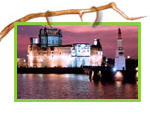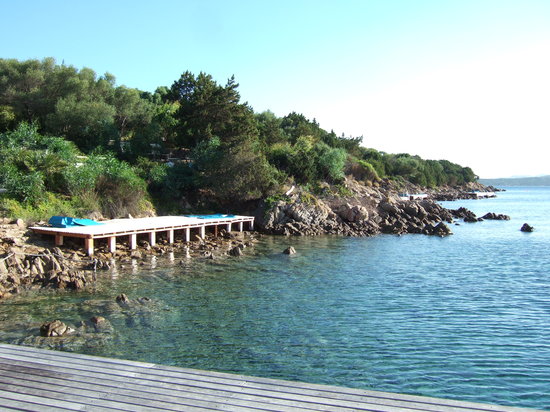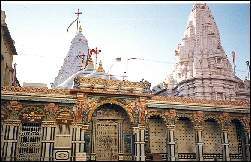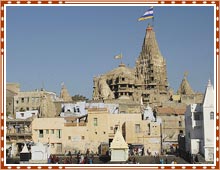Daman





A special city is this Jamnagar. It is a center of interest in terms of history, modernity as well as education. After leaving Kutch, Jam Raval had set up Jamnagar in 1540. For the next 400 years it was the capital city for the newly developed and prosperous Navanagar State in entire Saurashtra. It used to be within a fort until 1914. Jam Ranjitsinh had the city well laid out with big crossing circles, wide roads and houses on roads looking similar and built in one line along the sides, giving a disciplined civic look. As a result it came to be known as 'Paris of Saurashtra'.
It is a historical city. It had on its four sides a fort with gates. Its history is also full of romantic stories of brave warriors and other heroes. The Jadeja dynasty has a claim in many of these. In the central lake of the city we have 'Lakhota Mahal' that houses many romantic and colorful stories of love and valor of the rulers, their nobles and diwans or ministers.
Reconstructed during the rule of Jam (a term meaning King) Ranjitsinh in about 1914, the city is spectacular for its town-planning. It has a mixture of several styles with its roads, crossroads, marketplaces and other residential and no-residential buildings. Named as "Paris of Saurashtra', we can see the past glory it must have commanded in its gorgeous buildings, systematic roads, historical places etc. There are a number of temples within and out of the fort area, and also because of its large number of Sanskrit schools at one time, Jamnagar also has another name: 'Chhota Kashi', a place of learning. Dinstinguished men like Adityaramji, the music maestro, and Zandu Bhattji, the great Ayurved practitioner had settled here. These have become legendary figures of entire Gujarat. The present Zandu Pharmacy is a legacy of Zandu Bhattji.
As a centre of learning, Jamnagar still holds the fort. It has an Ayurved University, Gulabkunvarba Ayurved Mahavidyalaya, medical College, Polytechnic, ITI and training centers for all the three wings of the Armed Forces. Several industries continue to prop up in and around Jamnagar.
The town has a beautiful lake called Ranmal Talav. In its center is Lakhota Mahal. It is so designed that even the soldiers placed sun'ounding it could guard it so well that they could stop the entry of any enemy and his army. Today Lakhota Mahal is a national monument. It now has a museum that displays the beautiful samples of artistic sculptures and architectural designs. A well in this Mahal is so constructed that it looks like a hole in the ground, and still, just one quick blast of air from the mouth can bring out the water. Some walls have old paintings on them. On the edge of the lake is 'Kotha' a secret place to hoard weapons.
The Khambhalia Gate here is a beautiful construction, with its great sculpted figures. Jamnagar also has other palaces, viz. Vibhavilas and Pratapvilas palaces. Besides a large number of temples of Shiva, other gods and goddesses, it has many Jain temples too. A huge temple of Kabir sect is located here. Jamnagar is the most important center of medical studies, both Ayurvedic and Allopathic. This huge Ayurvedic University also has a Research Center . Besides, many years ago, Jam Saheb had one Solarium built here for solar treatment of many diseases. It is unique in that it turns with the progress of the Sun to get the maximum benefit of solar energy.
Yet another landmark of Jamnagar is famous for its 'Manekbai Muktidham', the cremation center of the city. It provides an example of how even a cremation center can be a place to get peace, beautiful and full of kind attitude. It contains a big garden, library and statues of a large number of historical and saintly figures; images of some gods and goddesses are also pla'ced here. The dread associated usually with Death no longer has a hold on the hearts of the people who come here, and it is one of its kind such place of last journey of a beloved relative.
Near Jamnagar is Ranjitsagar. Specially created by building a dam this lake is beautiful place of interest and is also an important source 'of water for the city. Another place of interest is the camp of the Air Force and Indian Navy at port of Bedibandar, Nearby is the Sainik School at Balachadi. The sports persons would definitely associate this city with the name of Jamsaheb Ranjitsinhji, a world famous cricket-player of yore. Named after this sporty ruler even today the cricket matches are played in India as Ranji Trophy Matches.
During the freedom struggle Jamnagar State also played an important role. Among those native rulers who offered to join the Indian Union on their own, Jam Saheb was one of the leaders. He played an important role in even getting other rulers convinced of this procedure as a wise step, for he was a player of importance in the politics of the native rulers. In the establishment of Saurashtra State and in the renovation of Somnath temple he made significant contribution too. Major General Rajendrasinghji, the only person with this designation in Indian Army (as this was abolished later on) also hailed from Jamnagar.
Nageshwar is just 15 km away from Dwarka. From here we also come across Nageshwar Gopi Talav. This area was known as 'Darukavan'. The Shiv temple of Nageshwar commands significance among the devotees, for it is one of the Twelve Jyotirlings.

| |

| |

| |

| |

| |

| |

| |
 Jamnagar is a well-laid out town in Saurashtra, once governed by the princely family of Jadeja dynasty. The palace has a collection of Victorian paintings. Right in the heart of the city, in the centre of a lake and approached by a stone bridge are two magnificent buildings - the Kotha Bastion and the Lakota Museum. One of the curiosities of the Kotha Bastion is an old well the water of which can be obtained by blowing in a small hole in the flooring of the building. The Lakota is a local museum displayed on the terrace of the building. It has a fine collection of sculpture dating from the 9th to the 18th century. There are also pictures and numismatic galleries, pottery from Saurashtra, palaeolithic and neolithic finds from the Narmada valley and a manuscript and epigraphic gallery with copper plates and ancient inscriptions
Jamnagar is a well-laid out town in Saurashtra, once governed by the princely family of Jadeja dynasty. The palace has a collection of Victorian paintings. Right in the heart of the city, in the centre of a lake and approached by a stone bridge are two magnificent buildings - the Kotha Bastion and the Lakota Museum. One of the curiosities of the Kotha Bastion is an old well the water of which can be obtained by blowing in a small hole in the flooring of the building. The Lakota is a local museum displayed on the terrace of the building. It has a fine collection of sculpture dating from the 9th to the 18th century. There are also pictures and numismatic galleries, pottery from Saurashtra, palaeolithic and neolithic finds from the Narmada valley and a manuscript and epigraphic gallery with copper plates and ancient inscriptions

The Jamnagar district of Gujarat epitomizes a perfect blend of heritage and modernity. It is a coastal town which is situated 92 km north west of Rajkot.There are buildings of ancient times on one hand and a well planned city with modern facilities on the other. Besides monuments; it is a major tourist attraction, as it is home to some of the most exclusive handicrafts.
Jamnagar is situated on the confluence of the rivers Nagmati and Rangmati and was previously known as Nawanagar. The city of Jamnagar was founded by Jam Raval who made it his capital. It is located around 300 km from Ahmedabad and is situated in the Saurashtra region of Gujarat.
The Jadeja Rajputs known as Jams contributed greatly to the development of the city and employed European town planning techniques, which is evident in the new city.From being an ancient city to symbolizing industrial revolution, the city of Jamnagar is certainly one of the places in Gujarat which holds tourist importance.
There are numerous places of tourist importance in Jamnaga
The Jamnagar district of Gujarat epitomizes a perfect blend of heritage and modernity. It is a coastal town which is situated 92 km north west of Rajkot.There are buildings of ancient times on one hand and a well planned city with modern facilities on the other. Besides monuments; it is a major tourist attraction, as it is home to some of the most exclusive handicrafts.
Jamnagar is situated on the confluence of the rivers Nagmati and Rangmati and was previously known as Nawanagar. The city of Jamnagar was founded by Jam Raval who made it his capital. It is located around 300 km from Ahmedabad and is situated in the Saurashtra region of Gujarat.
The Jadeja Rajputs known as Jams contributed greatly to the development of the city and employed European town planning techniques, which is evident in the new city.From being an ancient city to symbolizing industrial revolution, the city of Jamnagar is certainly one of the places in Gujarat which holds tourist importance.
There are numerous places of tourist importance in Jamnaga Solarium is a one of its kind structure in entire Asia. It is also known as Ranjit Institute of Poly-Radio Therapy and is mainly known for the treatment of skin diseases. It is a revolving tower which provides full daylong sunlight for the treatment. It was built by Jam Shri Ranjitsinhji with the help of an expert from France.
Solarium is a one of its kind structure in entire Asia. It is also known as Ranjit Institute of Poly-Radio Therapy and is mainly known for the treatment of skin diseases. It is a revolving tower which provides full daylong sunlight for the treatment. It was built by Jam Shri Ranjitsinhji with the help of an expert from France.
 The only remains left of the fortified town of Jamnagar are the two towers of Mandvi & Pancheshwar and the Khambhalia & Grain Market Gate. Apart from this, there is some part of the wall surrounding the city which can be still seen. It was built in the 17th century by Wazir Meraman Khawas, also known as Meru Khawas. He is said to be a very powerful dictator, who ruled over Jamnagar between 1744 and 1800 AD.
The only remains left of the fortified town of Jamnagar are the two towers of Mandvi & Pancheshwar and the Khambhalia & Grain Market Gate. Apart from this, there is some part of the wall surrounding the city which can be still seen. It was built in the 17th century by Wazir Meraman Khawas, also known as Meru Khawas. He is said to be a very powerful dictator, who ruled over Jamnagar between 1744 and 1800 AD.
 Tejsi Shah built this Jain temple in 1564. It was ruined by Mughal army in 1590 and inn 1592, Tejsi Shah got these temples renovated.
Tejsi Shah built this Jain temple in 1564. It was ruined by Mughal army in 1590 and inn 1592, Tejsi Shah got these temples renovated.
 The construction of the temple was started in 1612, during the rule of His Highness Jam Jasaji I, and completed in the year 1620.
The construction of the temple was started in 1612, during the rule of His Highness Jam Jasaji I, and completed in the year 1620.
 Jamnagar was once a fortified town enclosed within walls and the rulers contributed significantly to the heritage of the place. Today, the city stands dotted by a number of monuments built during the ancient era. The architecture of Jamnagar, being a blend of Rajput and European styles, is awe inspiring. There are also a number of temples in Jamnagar, which are the main attraction for the people coming on sightseeing tours. The royal buildings in the city are eye catchy and are liked by one and all. A tour of the Jamnagar city is definitely a splendid experience.
Jamnagar was once a fortified town enclosed within walls and the rulers contributed significantly to the heritage of the place. Today, the city stands dotted by a number of monuments built during the ancient era. The architecture of Jamnagar, being a blend of Rajput and European styles, is awe inspiring. There are also a number of temples in Jamnagar, which are the main attraction for the people coming on sightseeing tours. The royal buildings in the city are eye catchy and are liked by one and all. A tour of the Jamnagar city is definitely a splendid experience.
| Jamnagar | ||||||||||||||
| ||||||||||||||
|